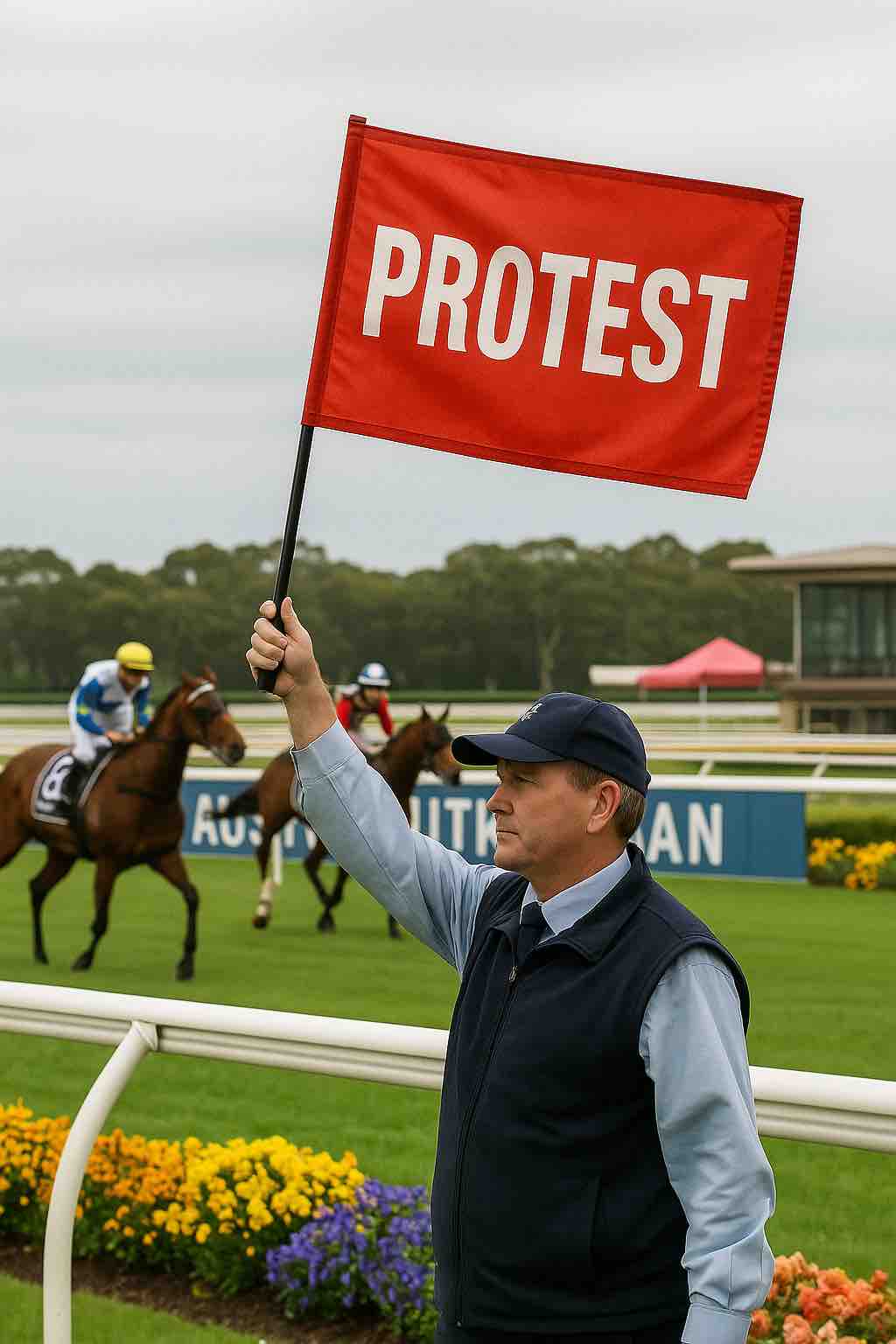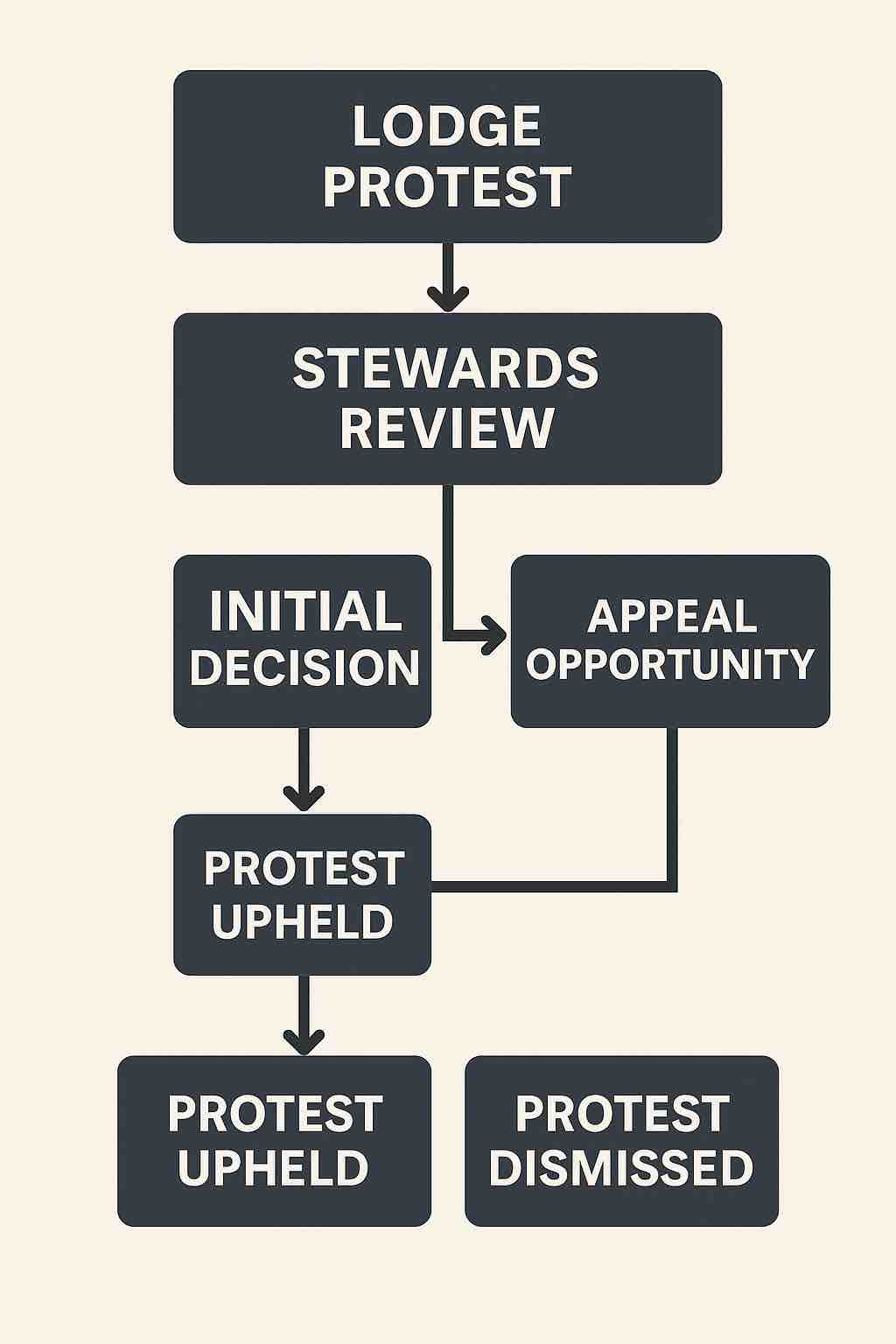Australian Racing Rules, Protests & Penalties Explained
Published on January 25, 2025
Horse racing is thrilling — but disputes can complicate things. Understanding horse racing rules, especially protest procedures and penalties, is vital to punters and participants alike. In this guide, we break down the process step by step, using easy language and real-world examples. You’ll learn how protests work, why they matter, how they affect payouts, and what steps you can take. Let’s get started!
Overview of AR Rules
Racing Australia sets the foundation for all officiating. Key points include:
- Obligations: Jockeys must ride safely and fairly.
- Interference policies: These prevent riders impeding others unlawfully.
- Definition of offence: Anything from lane drifting to careless riding.
The rules aim to ensure safety and a level field. Familiarising yourself with these basics helps you follow protests, appeals, and penalties.
Common Offences in Australian Racing Rules
Understanding common offences helps punters interpret protests quickly.
| Offence | Description |
|---|---|
| Careless riding | Using whip excessively or drifting into another horse’s path. |
| Wandering | Jockeys channel-hopping and forcing others off-line. |
| Improper conduct | Jockeys acting unprofessionally or unsportsmanlike. |
| Non-compliance | Failing to follow steward instructions or ride engagements. |
| Horse welfare breaches | Whip overuse or riding on injured horses. |
In 2023, a jockey was fined $1,500 for careless riding during the Gosford Cup — an everyday reminder these rules are enforced. Civil penalties can include fines, licence suspensions, or even disqualifications.
Gives punters and participants clarity and transparency.
Quick tip: Watch for public steward reports after each race — they list infringements and penalties.
How Protest Works (Flowchart Guide)
1. Lodging a Protest
- Must be done in writing within 30 minutes of race end.
- Lodged by rider, trainer, owner, or official on grounds like alleged interference or foul riding.
2. Stewards Review
- A panel examines video footage and interviews jockeys.
- The protest flag is raised (see image below).

3. Initial Decision
- Points covered:
- Did an offence occur?
- Were other horses disadvantaged?
- Should the result be changed?
4. Appeal Period
- The losing party can appeal within two business days.
- They must present new evidence or question the stewards’ interpretation.
5. Final Ruling
- Outcomes are:
- Protest upheld: placings changed, refunds issued.
- Protest dismissed: placings remain unchanged.
Lodge Protest ➝ Stewards Review ➝ Initial Decision ➝ Appeal Opportunity ➝ Final Outcome

Use this roadmap to follow any protest story easily!
Outcomes of Protests & Their Impacts
A. Placing Changes
- Winner may be downgraded to 2nd.
- 2nd horse bumped up to winner.
- Other horses might move accordingly.
B. Fines & Suspensions
- Riders may face penalties such as $1K fines or multi-race suspensions.
C. No Change
- If no significant interference is found, current placings stand.
Effect on Payouts & Betting
Protests can drastically alter your bets and payouts. Here’s how:
- Winning bets: Refunded if winner is disqualified.
- Quinella/Exacta/Trifecta bets:
- If horses’ positions change, the whole pool is recalculated.
- Payouts adjust accordingly — even long after race day.
Example: If a protest disqualifies a favourite after the race, early bettors might win big. But late punters — and betting agencies — face complex payout rewinds.
Internal Resource on Cup Scratchings
Interested in how scratchings affect protests?
Check our detailed guide on Cup scratchings. This post explains how late withdrawals shift track dynamics — which can lead to strategic protests or race cancellations.
FAQs on Horse Racing Protest Rules
1. What’s the time limit to lodge a protest?
Within 30 minutes after the race, in written form to the stewards.
2. Who can lodge a protest?
Owners, trainers, jockeys, or stewards can lodge — but not punters.
3. Does every protest change race results?
No. Only upheld protests shift placings.
4. How long before the payout is final?
Final results may take up to two days, allowing for appeals.
5. What’s the protest appeal period?
A two-business-day appeal window follows the stewards’ decision.
6. Can bets be paid before a protest is resolved?
Agencies may defer large, exotic bets until the final result is confirmed after the protest period.
By knowing horse racing protest rules and penalties, punters can make informed decisions. Staying alert to protests boosts your confidence and awareness of how bets can shift.
What you gain:
- Clear understanding of protest triggers
- Insight into possible outcomes and appeal timelines
- Smart betting based on evolving race results
Ready to sharpen your racing strategy? Bookmark this guide, follow our blog (see e.g. The Thrill of Horse Racing, How to Bet on Horse Racing or Unlock Winning Strategies), and share it with fellow punters. Understand the rules, stay informed—and enjoy the ride!


